Introduction #
Have you ever wanted to build a bustling metropolis in the fraction of the time of most city-builders? If so, let me introduce you to Sprawlopolis. This tiny, wallet-sized game packs a SimCity-like experience into a deck of 18 cards. Whether you’re a seasoned board gamer or just dipping your toes into solo board gaming, Sprawlopolis is a game that invites you to flex your urban-planning muscles. The question is, does this little box deliver big fun? Let’s dive in and find out.
Overview #
In Sprawlopolis, you take on the role of a city planner tasked with building a thriving city that balances roads, zones, and scoring conditions. The game consists of 18 double-sided cards. One side of each card is used to construct the city, while the other side provides unique scoring conditions. On the city side each card features four zoning blocks and a road network. You will always find one block of each zone type per card–residential, commercial, industrial, and park zones.
At the start of the game, you shuffle the deck and draw three cards to serve as that game’s scoring conditions. These objectives can range from rewarding a green city that minimizes industrial zones to incentivizing looping roads. The rest of the cards form your draw deck, and you’ll use these cards to expand your city one piece at a time.
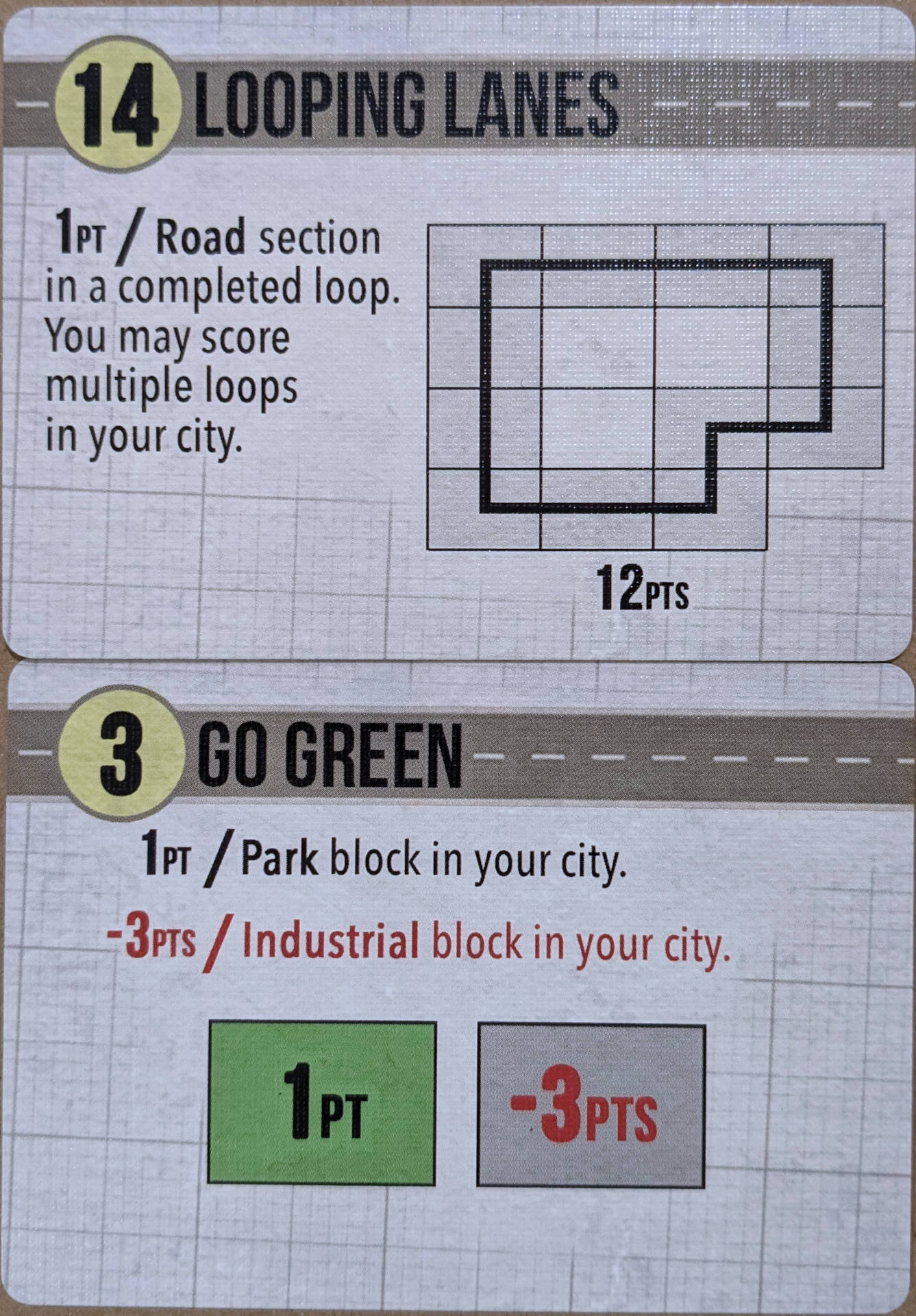
On your turn, you’ll have up to three cards in hand. You play one card into your city, adhering to a few simple placement rules: cards must be placed in a horizontal orientation and you’re free to overlap cards to cover up portions of previously placed blocks. After playing a card, you pass the remaining cards in your hand to your neighbor and then draw one card from the deck to keep until your next turn.
The goal is simple–score as many points as possible by meeting your scoring conditions and minimizing penalties for roads. Once the deck is depleted and all cards are played, you tally your score and see if you’ve created a city worthy of applause or destined for demolition.
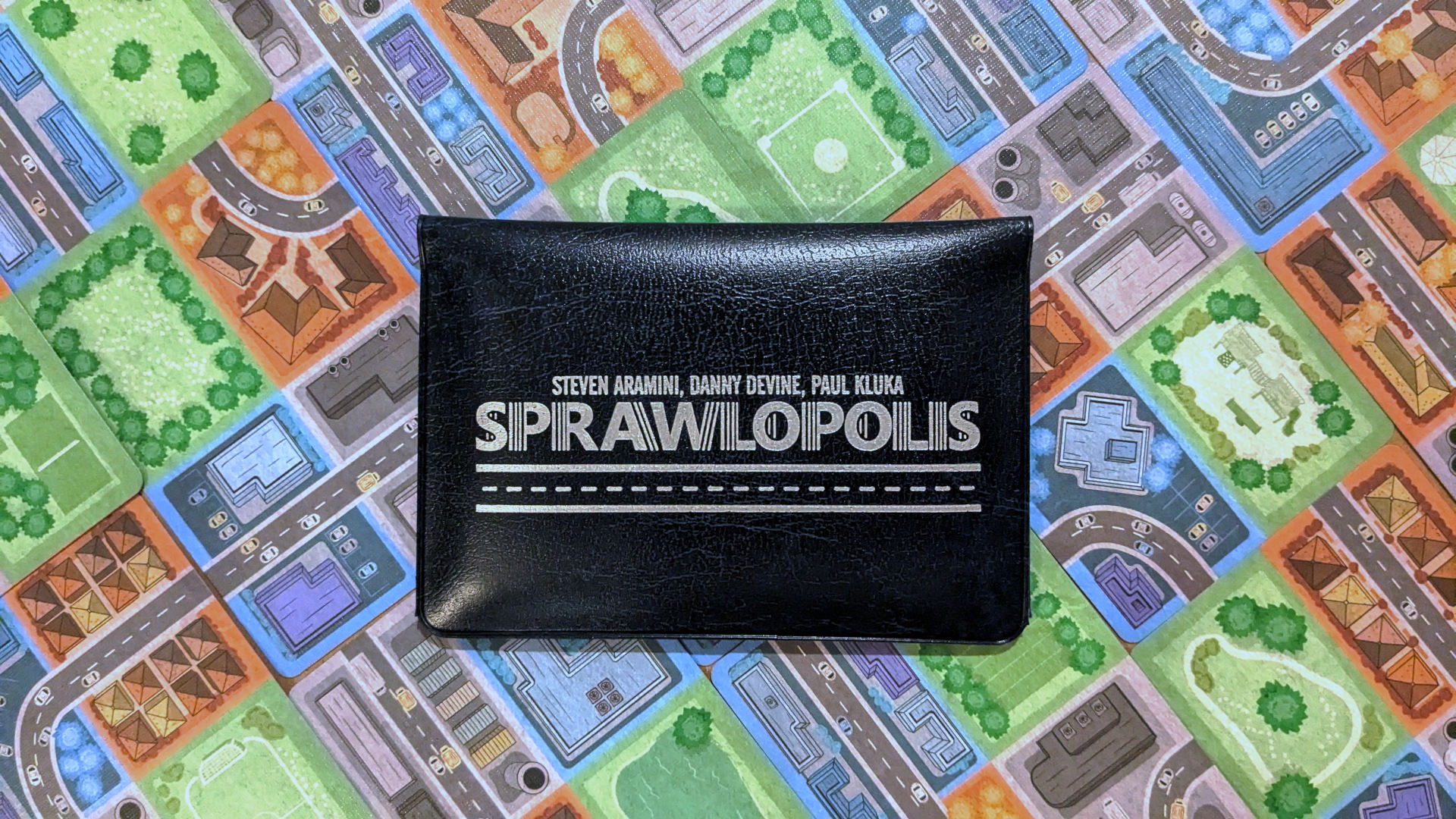
Gameplay #
At its core, Sprawlopolis is a card-placement game, but the ability to layer cards adds a whole new dimension. Overlapping cards to cover one, two, or even four existing blocks isn’t just a clever mechanic; it’s a brain-bending exercise in urban planning.
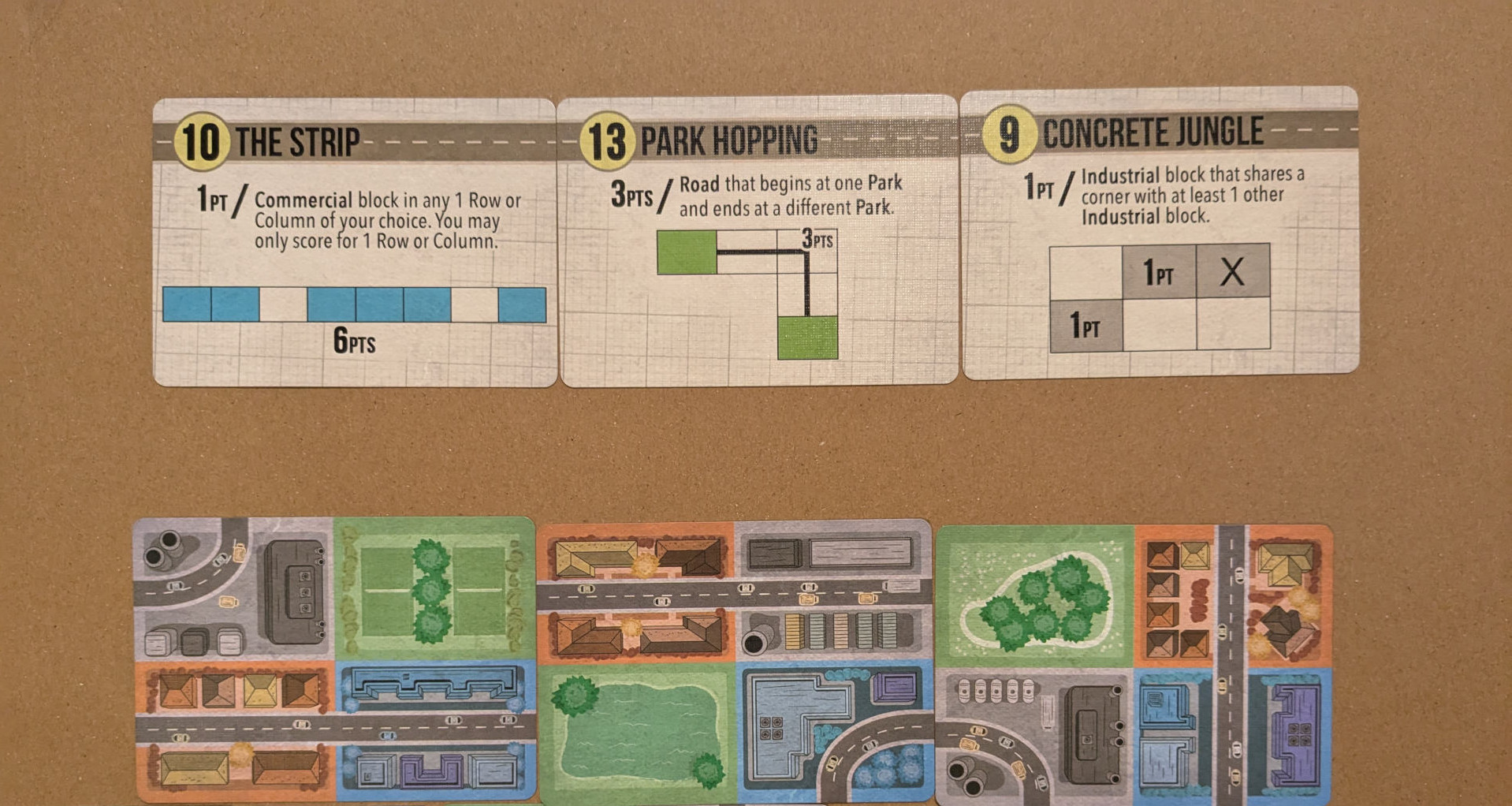
Each decision feels weighty as you’re constantly balancing your current card placement with your long-term strategy. There’s a delightful internal tug of war when placing cards. Sometimes, you’ll find the perfect spot for a card that satisfies one scoring condition only to realize it adds chaos to your road network or disrupts another scoring condition. It’s a constant push and pull that keeps your brain engaged and makes every game feel unique.
The variability in scoring conditions is one of Sprawlopolis’ greatest strengths. With 816 possible combinations of three scoring conditions, every game feels like a fresh puzzle to solve. For the completionists among us, the idea of conquering all 816 combinations is both daunting and thrilling. Each set of objectives shifts your focus, forcing you to adapt your strategy to the puzzle at hand. The game recommends drawing three scoring conditions at random, but it’s also fun to replay a combination until you figure out that particular puzzle.
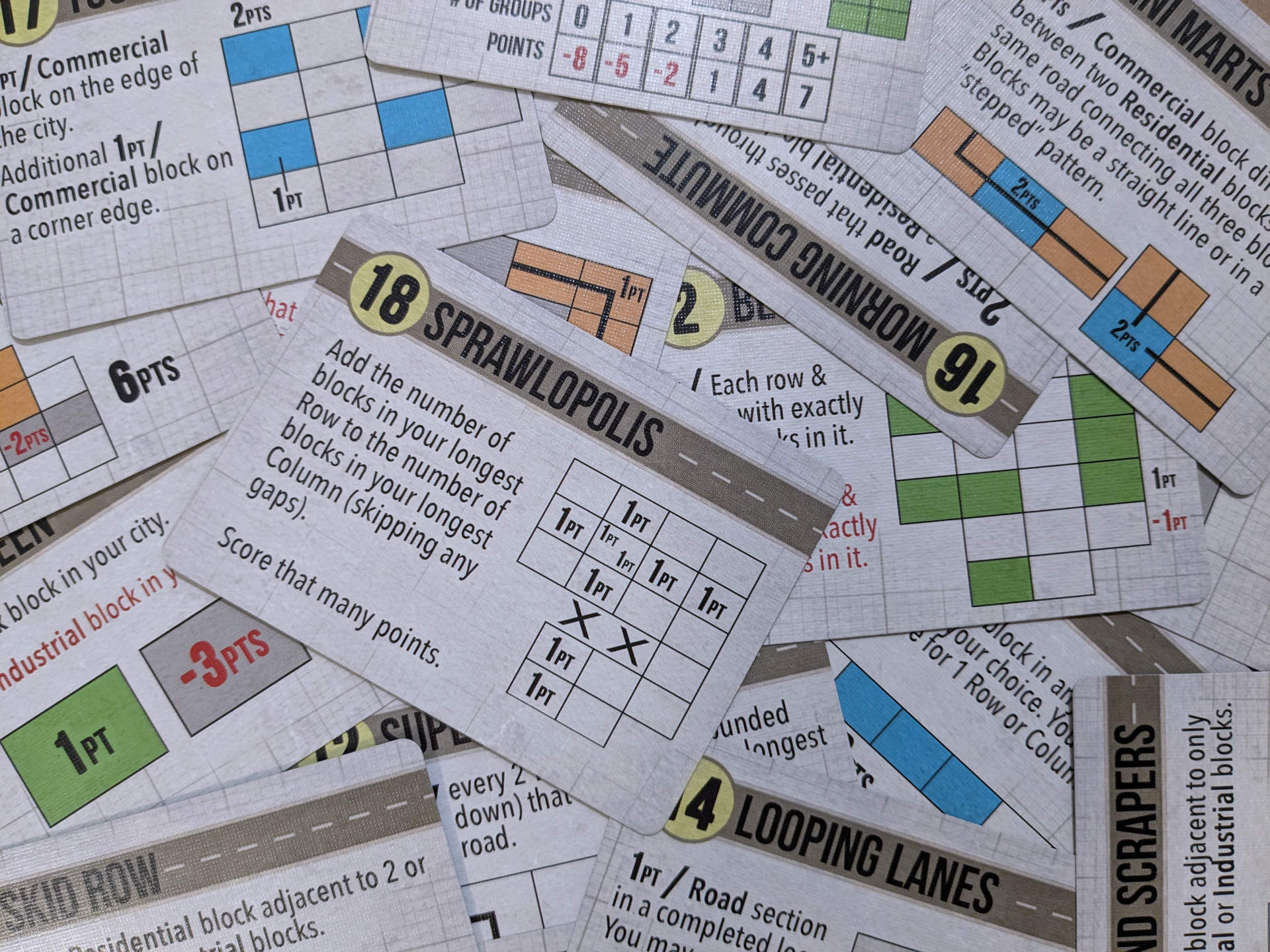
The drafting-like mechanic–where players pass cards around–is brilliant in cooperative play. It allows newer players to offload tricky cards while giving experienced players a chance to flex their strategic muscles. The experienced player can make a larger contribution to the team without quarterbacking (i.e. telling teammates what to do or playing on their behalf). However, the drafting can add a bit of downtime, as players often need to reassess their plans once they receive new cards. It’s a minor trade-off for an otherwise excellent system.
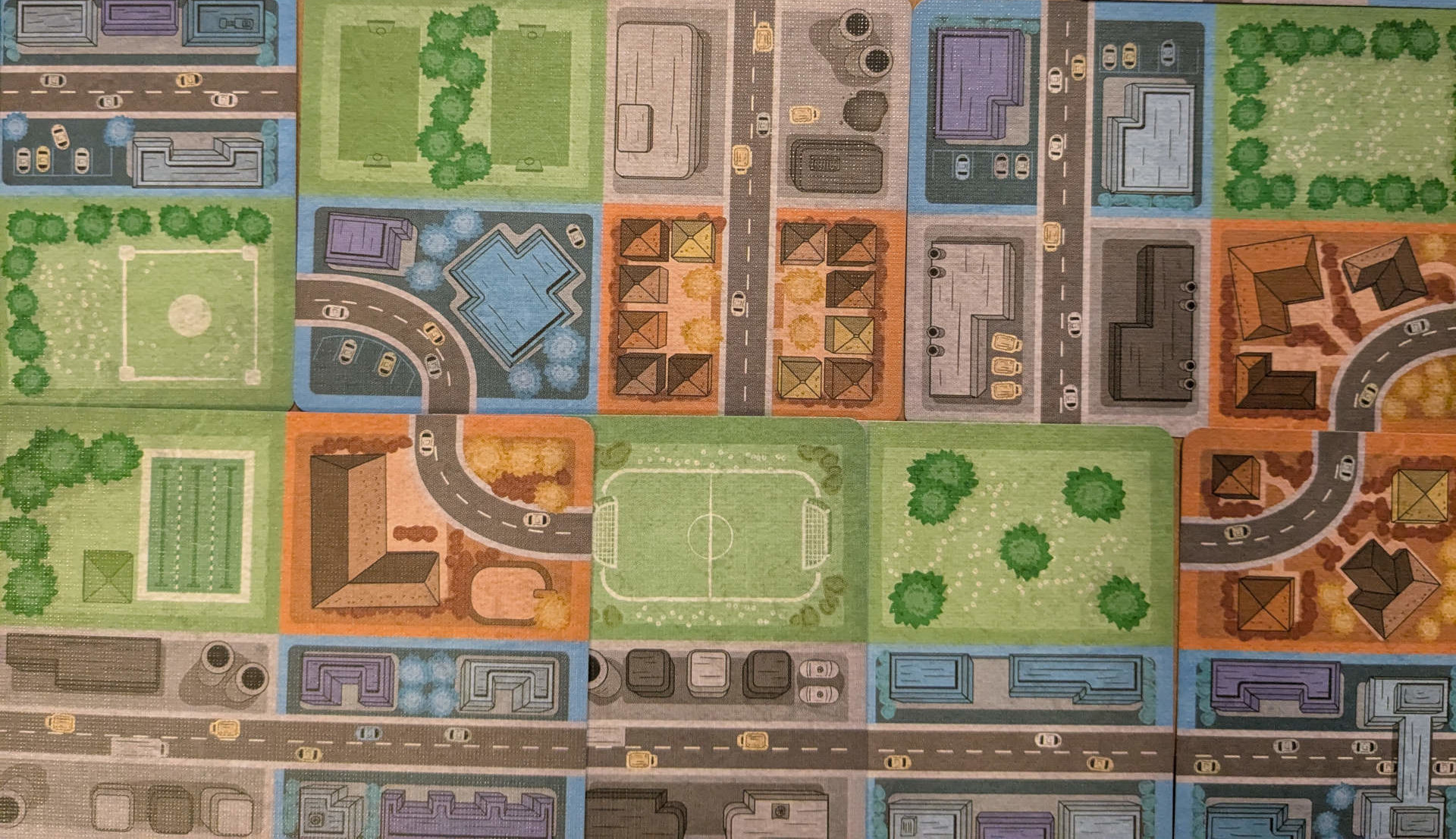
The game offers three difficulty levels: Easy, Normal, and Hard. I found Easy to be a good way to introduce the game to other players and not get stomped on our first game. When we score the game, I explain how road scoring works and tell them what we would have scored on Normal difficulty. Then, I leave it up to the group if they want to continue to play more casually or try the Normal difficulty. I love that the difficulty is adjustable; it ensures the game stays accessible while offering depth for those who seek it.
Solo Play #
For solo play, the drafting mechanic is replaced by a simpler system: you always have three cards in hand, play one, and draw one. This reduces the churn in your hand so you might be stuck holding a card that you might be having difficulty placing, but it doesn’t detract from the overall experience.
The compact size, quick setup, and sheer number of puzzles make it a fantastic solo game. It’s easy to play a game (or three) in a single sitting, and the challenge is consistently satisfying. For a solo gamer like me, Sprawlopolis hits all the right notes.
Components and Design #
Sprawlopolis nails the city-building theme, evoking the joy of putting on your city planner hat and watch your city grow and take form. While it’s not a city simulator like SimCity or Cities: Skylines, it scratches that same itch for me from a creative perspective in a more compact and accessible format.
The scoring conditions all have clever names which are tangibly reflected in your resultant cities when you complete them effectively (e.g. Mini Marts calls for small commercial blocks implanted in residential districts).
The card-layering mechanic is not only clever, but it fits in perfectly thematically with the concept of rezoning in city planning.
The artwork is simple but effective. Each zone type has a distinct tint, making it easy to differentiate between residential, commercial, industrial, and park zones at a glance. The illustrations within each block–tiny trees, cars, and buildings–are charming and add just enough visual interest without overwhelming the design. The minimalistic approach works perfectly, ensuring the game is intuitive and visually appealing.
Despite its small size, the components are of excellent quality. The cards are sturdy and hold up well to repeated shuffling and handling. The wallet-style packaging is not just a novelty; it’s genuinely convenient, making Sprawlopolis a great choice for gaming on the go.
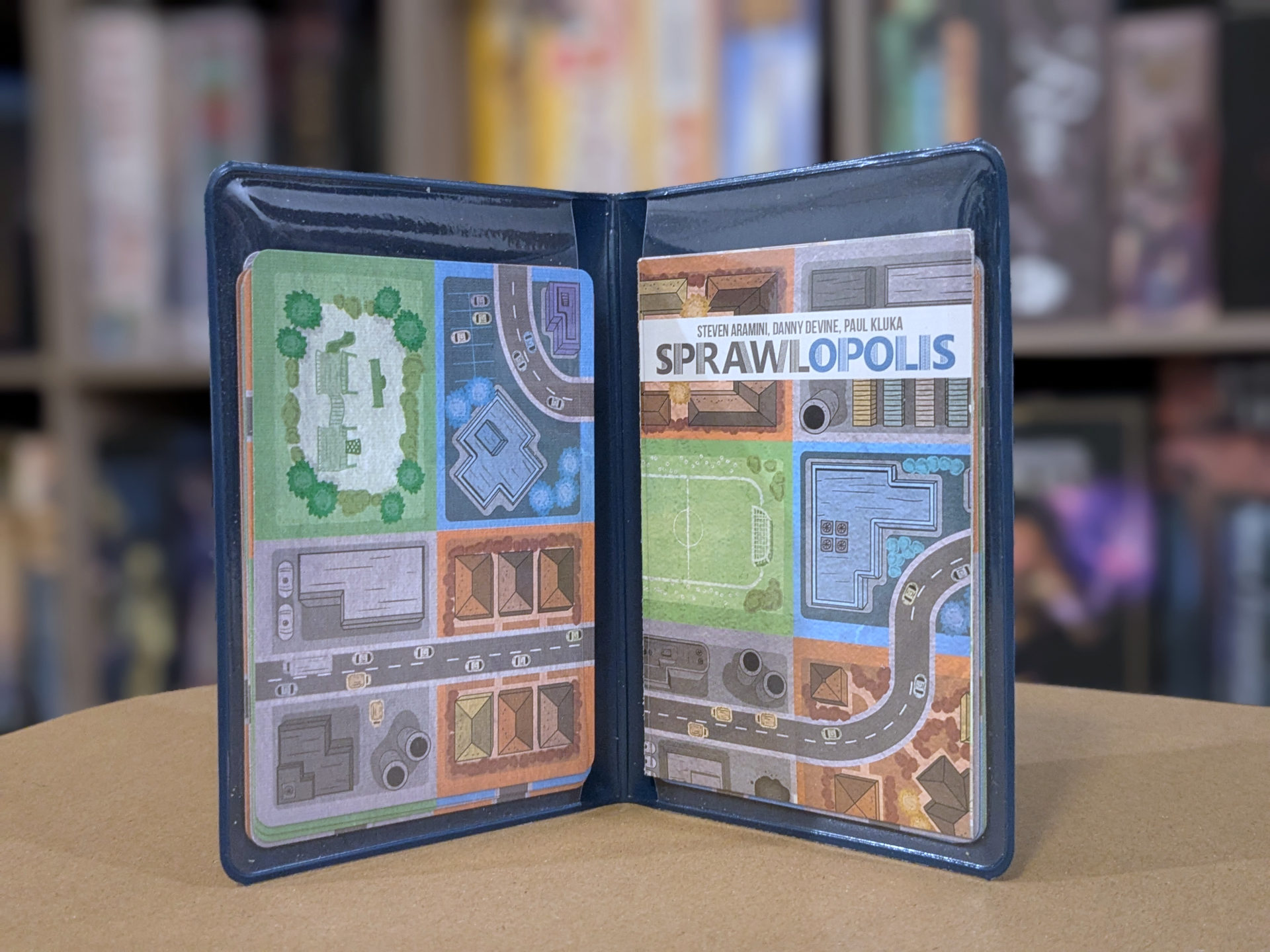
Final Thoughts #
Sprawlopolis is a masterclass in small-box gaming. It takes a simple premise–building a city–and layers it with enough depth, challenge, and variability to keep you coming back for more. Whether you’re a solo gamer, a fan of cooperative play, or just someone who loves clever design, this game has something to offer. It’s quick to set up, endlessly replayable, and delivers a rewarding experience every time.
For me, Sprawlopolis has become a go-to game when I want a thoughtful yet accessible challenge. If you enjoy designing sprawling cities, this little gem might just be your next favorite game.
We purchased this product independently. All opinions expressed are independent, honest, and unbiased.
- Simple rules, quick setup, and compact size make it perfect for solo play.
- The card layering mechanic adds a unique spatial puzzle element to the game.
- 816 scoring combinations ensure endless replayability.
- Cooperative play encourages teamwork and shared accomplishment.
- The drafting-like mechanic can slow down the game a bit.
Learn more about how we rate board games...
